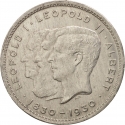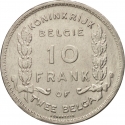You are about to finish your registration. Please check your mailbox (including spam folder). There should be a letter with a confirmation link. Check setting to make sure that your e-mail address is correct.
Send letter againDescription
The Belgian Revolution was the conflict that led to the secession of the southern provinces (mainly the former Southern Netherlands) from the United Kingdom of the Netherlands and the establishment of an independent Kingdom of Belgium.
The people of the south were mainly Flemings (speakers of low Franconian dialects) and Walloons (speakers of langue d'oil dialects). Both peoples were traditionally Roman Catholic as contrasted with the largely Protestant (Dutch Reformed) people of the north. Many outspoken liberals regarded King William I's rule as despotic. There were high levels of unemployment and industrial unrest among the working classes.
On 25 August 1830, riots erupted in Brussels and shops were looted. Theatregoers who had just watched the nationalistic opera La muette de Portici joined the mob. Uprisings followed elsewhere in the country. Factories were occupied and machinery destroyed. Order was restored briefly after William committed troops to the Southern Provinces but rioting continued and leadership was taken up by radicals, who started talking of secession.
Dutch units saw the mass desertion of recruits from the southern provinces and pulled out. The States-General in Brussels voted in favour of secession and declared independence. In the aftermath, a National Congress was assembled. King William refrained from future military action and appealed to the Great Powers. The resulting 1830 London Conference of major European powers recognized Belgian independence. Following the installation of Leopold I as "King of the Belgians" in 1831, King William made a belated attempt to reconquer Belgium and restore his position through a military campaign. This "Ten Days' Campaign" failed because of French military intervention. The Dutch only accepted the decision of the London conference and Belgian independence in 1839 by signing the Treaty of London.
Engraver: Armand Bonnetain
Obverse

|
Depicts the portraits in the left profile of the three first Kings of Belgium, engraver's initials below, surrounded by their names and dates. LEOPOLD I • LEOPOLD II • ALBERT |
|---|---|
Reverse

|
Value (in Francs and Belgas) in the centre flanked by two stalks of laurel. Legend in French (Kingdom of Belgium) above, engraver's name below. ROYAUME |
| Edge |
Position A (readable from the obverse) or Position B (readable from the reverse) * BELGIQUE - BELGIË * |



